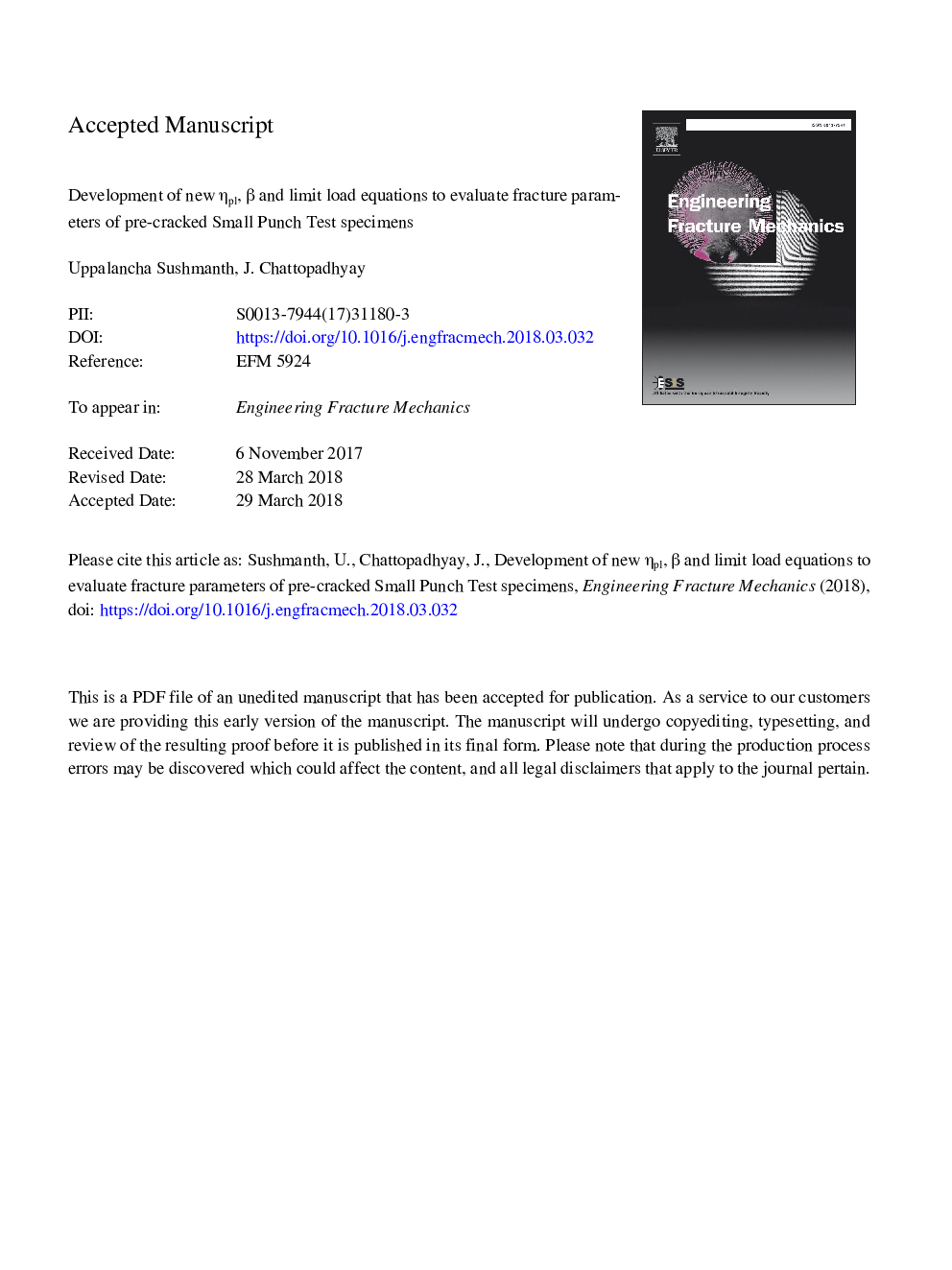| Article ID | Journal | Published Year | Pages | File Type |
|---|---|---|---|---|
| 7168834 | Engineering Fracture Mechanics | 2018 | 18 Pages |
Abstract
The small punch test (SPT) is an alternative method for determination of the mechanical properties when enough material is not available for conventional testing. Recently SPT specimen configuration is changed to have a crack (known as pre-cracked SPT) for more accurate determination of material fracture properties. Use of p-SPT specimens needs limit and maximum load values and geometric parameters, β and ηpl for evaluation of Stress Intensity Factor (SIF) and plastic J-integral respectively. However, general equations for these parameters are not available in the open literature. The present paper is an attempt to address this aspect of p-SPT specimens. Finite element analysis has been employed to evaluate the above parameters. Square pre-cracked specimens with crack parallel and perpendicular to the thickness direction are considered in this paper. The range of crack size a/Wâ¯=â¯0.40-0.60 is considered for the present analysis. The load-displacement curves are extracted for both specimens using 3-D elastic-plastic FE analysis assuming elastic perfectly plastic material behaviour. Maximum load is directly obtained from the FEA load-deflection curves. The maximum load helps to assess the machine capacity to perform the SPT. Using the elastic-plastic J-integral and load-displacement data from FEA, ηpl values are calculated. Limit analysis using Plastic Work Curvature (PWC) criterion is carried out to obtain the limit loads. The geometric factor (β) is found out using elastic FE analysis for SIF calculation. Based on these FEA results, new equations have been proposed for limit load, maximum load, geometry factor (β) and ηpl for both types of p-SPT specimen configurations.
Related Topics
Physical Sciences and Engineering
Engineering
Mechanical Engineering
Authors
Sushmanth Uppalancha, J. Chattopadhyay,
